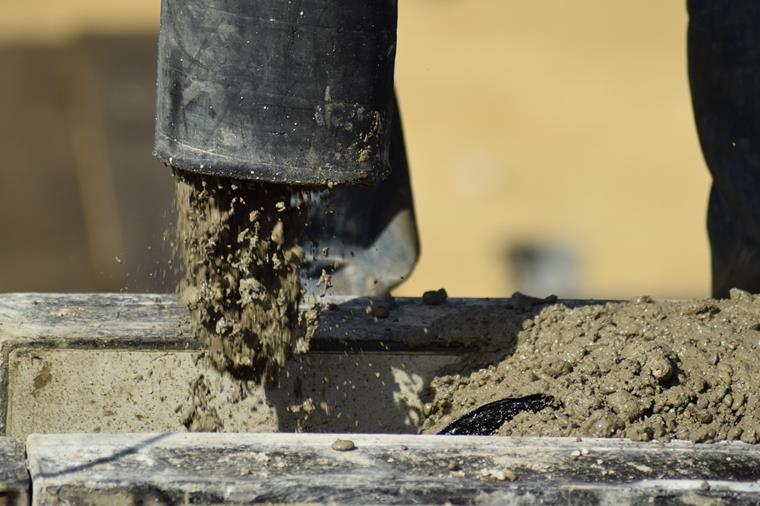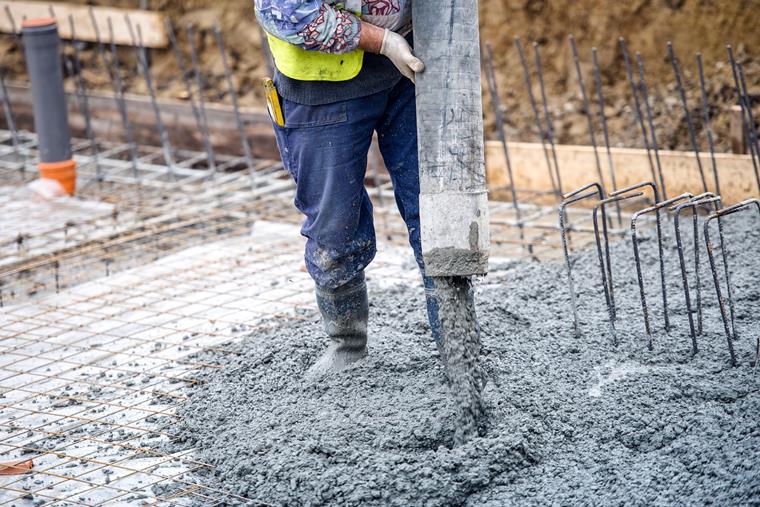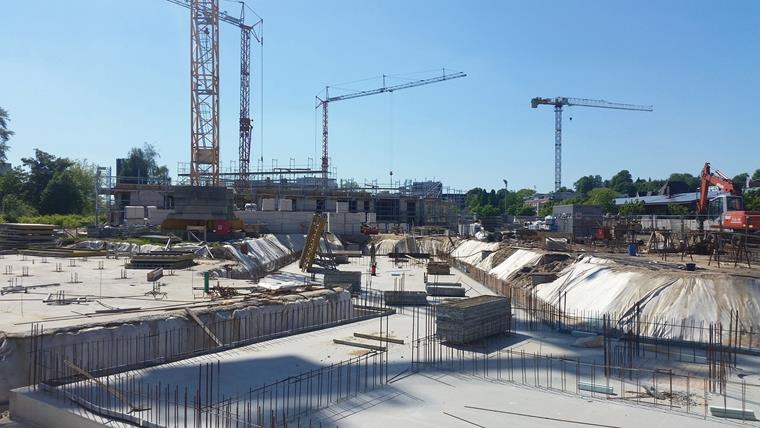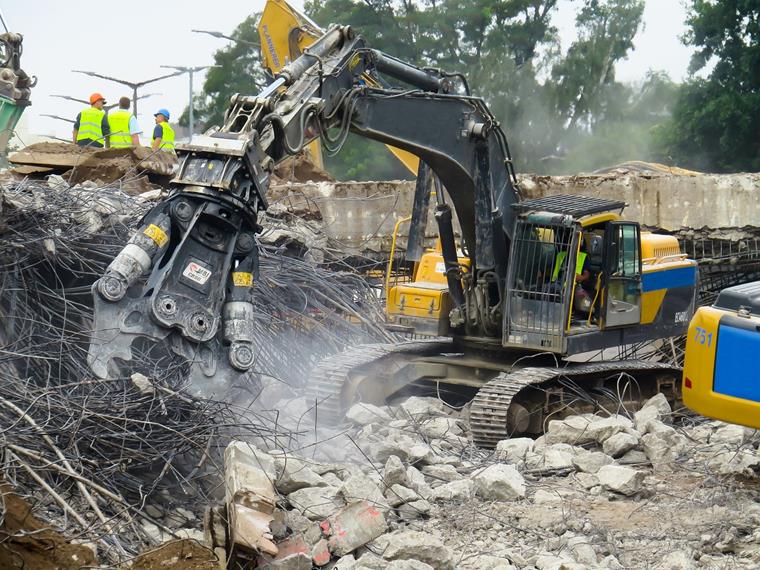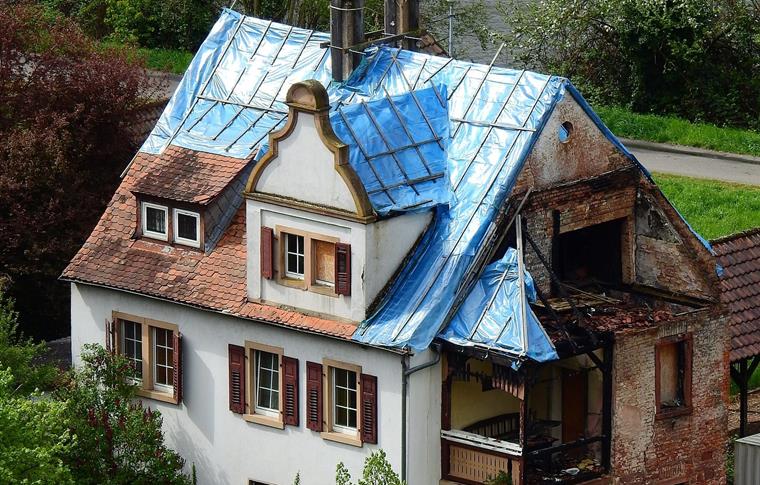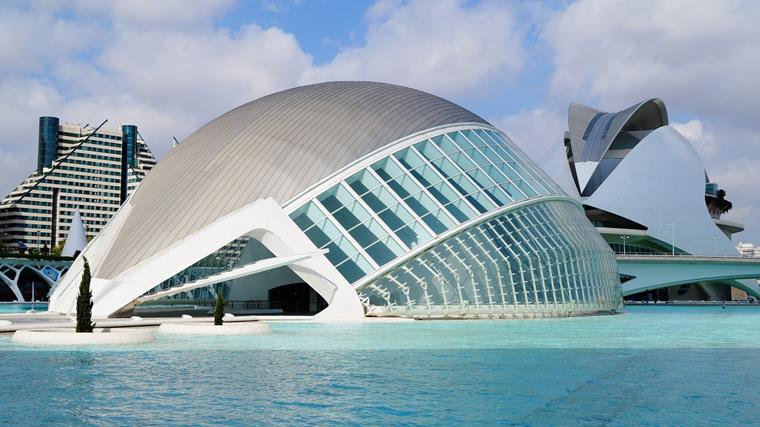Fascination of Construction: From Childhood
Our guest today, Simone Stürwald, is a professor of sustainable concrete and sustainable structures at the University of Applied Sciences in Eastern Switzerland. She has been involved in concrete structures for around 20 years.
- "I would like to help make this sector more sustainable."
Her parents regularly renovated their residence and that fascinated her even as a child. Since she is more of a mathematical type, she decided to study civil engineering instead of architecture. She particularly likes working on solutions to problems whenever they arise.
She currently teaches concrete technology as well as classic concrete structures and modeling using the FE method, for example. Furthermore, she heads a materials testing facility that conducts quality tests on aggregates and concrete products to support the regional construction industry. Apart from these tasks, she is also involved in research and development at her technical college. Quite a lot to do, we think!
Can concrete be sustainable?
Now, we come to the big topic of this episode: Mentioning concrete and sustainability in one sentence seems at first out of touch in today's world. Simone believes that the term sustainability itself is difficult to define. However, she is sure about one thing: It is always possible to be more sustainable than at present.
She explains to us that 90% of the CO2 emissions from concrete can be attributed to cement production, although cement only makes up about 12% of the finished concrete. Cement, in particular, has a major impact on the sustainability of concrete. Transport is not that important. Concrete will certainly not be as sustainable as timber, but in many areas, the use of concrete is simply necessary.
At the European level, cement should become climate neutral by 2050. There is still a long way to go, but there are already strategies to help achieve this goal.
Saving CO2 in Concrete Production
A well-known fact is that cement is heated to around 1,500 °C; that is, it is burned. The fuels used are a problem, of course. Another problem is limestone burning. Because during this process, a lot of CO2 is released, which is also called geogenic or stone CO2. This CO2 has to escape from the stone so that the cement is reactive and can be used afterwards. 60% of the CO2 comes from the stone, 40% from the fuels.
Simone explains that it is possible to optimize the fuels, of course. For example, by using materials that would be burned elsewhere anyway, such as old tires. Unfortunately, the 60% from rock cannot be influenced directly.
Another option would be to minimize the amount of cement in the concrete. When producing concrete, it is important to find an ideal grading curve. The spaces between the individual aggregates are filled with the water-cement mixture as a binding agent. In an ideal grading curve, these gaps are as small as possible so you need to use a minimum amount of cement. A good 40% of cement can be saved here without having to worry about lower compressive strength.
An alternative binder could also be a solution. After all, this mineral composition also exists in other materials. For example, it is possible to use fly ash or microsilica. There are already projects in Africa and Asia that turn agricultural waste, such as rice husks, into something similar to fly ash. At least in part, the substitution of cement is effective here.
- "If you combine all of this to a certain extent, you can significantly reduce these high CO2 levels."
But why is it not already being used in the construction industry? As is so often the case, the standards are a problem here. Only cements with a certain composition are permitted, and there are minimum cement quantities for a structure. There are still obstacles to be overcome in the implementation. However, research has been dealing with these topics for a long time.
New Ways for Construction Industry
Meanwhile, the issues of climate change and sustainability have also found acceptance in the construction industry. For example, in the area of timber structures, intensive work is being done to find as many uses as possible. However, timber as a building material has its limits. It is not permanent in every component, nor can it withstand the necessary compression. Although there are already solutions for many things in timber structures, timber is not exactly an ideal material for some structures.
For example, timber and masonry can only be used to a limited extent underground, at least as an outer shell. Soil moisture makes alternatives to concrete difficult to implement. Also in the case of foundations, we will probably be unable to avoid concrete in the future. It is similar with bridges, especially when they have to withstand high loads, such as highway bridges. Soundproofing and fire-protection requirements can also be implemented more easily with concrete, for example.
Will alternatives to conventional concrete cost more? Of course, we will not let this question be ignored, and Simone confirms our assumption. She explains that these additional costs are in the single-digit range. Moreover, a prototype or a product that is still in development is automatically a bit more expensive than it will be later, when it comes to the mass market.
Easier Building
In this context, Simone talks about the trend towards simpler construction. In response to our request, she tells us that it is important to use a single material for walls, for example. So instead of continuing to insist on mixed building materials, she points out clay, masonry, or other innovative building materials. Due to the use of a single building material, the construction can ultimately be recycled better than if you have mixed building material in front of you.
Simple construction scores with less complexity due to fewer layers used in a structure. Simpler floor plans and fewer spans also make construction much easier.
Concrete Recycling
We wonder whether concrete could also be recycled. After all, that would make a lot of things easier. Surprisingly, Simone explains to us that recycling concrete is quite common in her region. Concrete, which has a large proportion of recycled content, is often used as lean or filler concrete. Recycled concrete is also used a lot for walls and ceilings. This special recyclable concrete is currently still highly variable in its composition. However, work is being carried out to continuously improve its properties.
In Switzerland, concrete has been recycled by type for years when a building is demolished. At the moment, something like this is often still up for discussion in Germany.
Future of Construction
Simone lets us know that she really welcomes the supporting systems like BIM in structural engineering. She emphasizes that a model can be used to state in advance which variant of a structure made of certain materials can be designed in the most sustainable and cost-efficient way. This allows you to achieve the best results quickly and efficiently.
On one hand, you can optimize the building materials used for more sustainability, as is already being researched on the subject of concrete. On the other hand, there is also increasing interest in efficient structures, of course.
In this case, it would be a good idea to go through various options as to how walls and columns can best be used in a structure in order to create the desired usable area with the desired properties. Simone also thinks that using artificial intelligence for optimization is a great opportunity for more efficiency in construction.
She also points out that we have built a lot over the past 25 years. In her opinion, this trend is unlikely to continue in this way. The current financial market and also incentive systems for sustainability suggest a move in the direction of preservation and working with what we have.
Furthermore, she considers hybrid structures to be trend-setting. It is more important to optimally use each building material and not to focus on just one of them solely because of the costs or the ease of processing. It is more important that the building material is sustainable and that it works technically at this point. In particular, she thinks that digital automated prefabrication or printing components is a good way to use material as efficiently as possible.
Simone would like to see more focus on sustainability when building. However, we would also need better training for our engineers in this direction. We clearly agree with her.
We summarize: Concrete is not necessarily a climate killer. There are already ways to make concrete structures more efficient and sustainable; the research simply needs a little bit more time.
Simone, what is your favorite building?
We also ask Simone our final question, about her favorite building. She does not refer to a building, but to a builder: Santiago Calatrava. His buildings are known worldwide and are truly beautiful to look at. We can definitely understand her choice.
Thank you for visiting our podcast! We look forward to our next episode. You too? Then read or listen to it again when it says: Digital and Innovative Trends in Civil Engineering!
